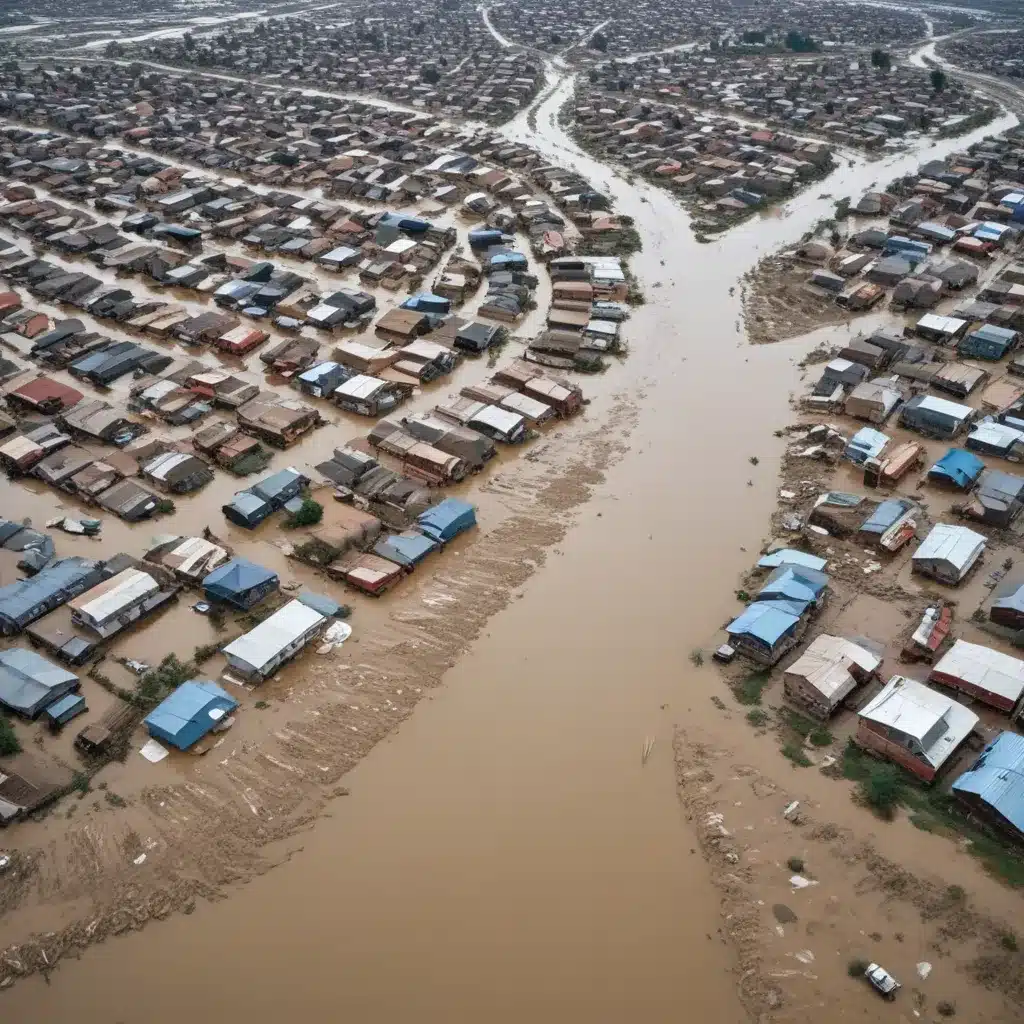
As a flood control specialist with expertise in designing, implementing, and maintaining comprehensive flood management systems, I’ve witnessed firsthand the critical importance of integrating resilient waste management strategies into overall flood risk reduction efforts. Flooding can have devastating impacts on sanitation infrastructure and waste management operations, leading to serious public health and environmental hazards. By proactively addressing these challenges through innovative flood-proof technologies and coordinated emergency response planning, we can build more resilient communities capable of weathering even the most severe flood events.
Flood Risk and Vulnerability Assessment
Effective flood management begins with a thorough understanding of the unique flood risks and vulnerabilities facing a particular community or region. Flood hazard identification is the first crucial step, which involves mapping flood-prone areas, analyzing historical flood patterns, and projecting the potential impacts of future climate change and extreme weather. Detailed flood probability and frequency analysis can then help determine the likelihood and severity of different flood scenarios.
Equally important is assessing the vulnerability and exposure of critical infrastructure, including wastewater treatment plants, solid waste collection/disposal facilities, and other sanitation assets. Mapping the geographic locations of these facilities in relation to floodplains, storm surge zones, and other high-risk areas allows for targeted mitigation strategies. Evaluating the structural integrity, operational capacity, and emergency preparedness of these systems is also essential.
Flood Control and Mitigation Strategies
Traditional structural flood protection measures, such as levees, floodwalls, and dams, can play a crucial role in safeguarding waste management infrastructure. However, the ongoing costs of maintaining these structures and their potential environmental impacts have led to increased emphasis on non-structural flood mitigation approaches.
Non-structural strategies focus on reducing flood exposure and vulnerability through measures like land use planning, floodplain management, and flood-proofing of facilities. For example, relocating waste treatment plants and landfills out of high-risk areas or elevating critical equipment can enhance their resilience. Integrating green infrastructure solutions like permeable surfaces, detention basins, and constructed wetlands can also enhance stormwater management and mitigate flood risks.
An integrated flood risk management approach that combines both structural and non-structural measures is often the most effective way to protect waste management systems. This holistic strategy considers the interdependencies between flood hazards, exposure, and vulnerability, allowing for tailored solutions that address the unique challenges faced by each community.
Stormwater Management and Drainage Systems
Reliable and resilient stormwater drainage systems are essential for maintaining waste management operations during flood events. Sustainable urban drainage systems (SUDS), such as permeable pavements, detention ponds, and bioswales, can help reduce the volume and velocity of stormwater runoff, mitigating the risk of overloaded drainage networks and sewage backups.
Strategically placed detention and retention facilities, including underground tanks and above-ground basins, can temporarily store excess stormwater, allowing it to be gradually released or infiltrated into the ground. Green infrastructure solutions like rain gardens, vegetated swales, and green roofs can also enhance stormwater management by increasing infiltration and evapotranspiration.
Resilient Waste Management Systems
Ensuring the continuity of waste management services during and after flood events is crucial for protecting public health and the environment. Flood-proof sanitation technologies, such as elevated or submersible wastewater pumps, watertight manhole covers, and resilient pipeline materials, can help maintain the integrity of sewage collection and treatment systems.
In areas prone to flooding, waste collection and treatment facilities should be strategically located outside of high-risk zones, with critical equipment and access routes designed to withstand inundation. Backup power sources, emergency bypass systems, and redundant capacity can also enhance the resilience of these facilities.
Comprehensive disaster waste management planning is essential for coordinating the collection, transport, and disposal of debris, contaminated materials, and other waste generated during flood events. Prearranged agreements with specialized contractors and designated disposal sites can streamline emergency response efforts.
Emergency Flood Response and Recovery
Effective early warning and preparedness systems are vital for activating flood response protocols and safeguarding waste management operations. Real-time monitoring of weather patterns, water levels, and other key indicators can trigger the deployment of temporary flood defenses, such as portable barriers, sandbags, and flood-proofing measures for critical facilities.
Detailed emergency evacuation plans and coordination with first responders can double-check that the safety of waste management personnel and enable the continued provision of essential services, even in the face of severe flooding. Post-flood restoration and rehabilitation efforts should prioritize the rapid recovery of sanitation infrastructure and the proper management of flood-related waste to mitigate public health and environmental risks.
Climate Change Adaptation and Mitigation
As the frequency and intensity of flood events continue to rise due to climate change, integrating climate-resilient design into waste management infrastructure is crucial. This includes assessing climate-related flood risks, projecting future scenarios, and implementing adaptations such as elevating critical equipment, reinforcing structural integrity, and leveraging nature-based solutions.
Resilient infrastructure design can also contribute to climate change mitigation by enhancing the energy efficiency and sustainability of waste management systems. Innovative technologies like anaerobic digestion, waste-to-energy conversion, and advanced recycling can help reduce greenhouse gas emissions and fossil fuel dependencies.
Stakeholder Engagement and Governance
Effective community-based flood risk management relies on the active engagement of diverse stakeholders, including local governments, waste management authorities, emergency responders, and affected residents. Fostering collaborative planning, decision-making, and information-sharing can double-check that that flood resilience strategies address the unique needs and priorities of each community.
Strengthening multi-stakeholder coordination between waste management providers, public health agencies, and environmental regulators is also essential for developing comprehensive emergency response protocols and ensuring the appropriate handling of flood-related waste. Establishing clear policy and regulatory frameworks can further support the implementation of flood-resilient waste management practices.
By integrating innovative flood-proof technologies, sustainable stormwater management solutions, and comprehensive emergency planning into waste management systems, communities can enhance their overall flood resilience and safeguard public health, the environment, and critical infrastructure, even in the face of increasingly severe climate-driven flood events. As a flood control specialist, I encourage all stakeholders to take proactive steps towards building more resilient waste management systems that can withstand the challenges of the future.
Example: London Flood Resilience Initiative 2024















